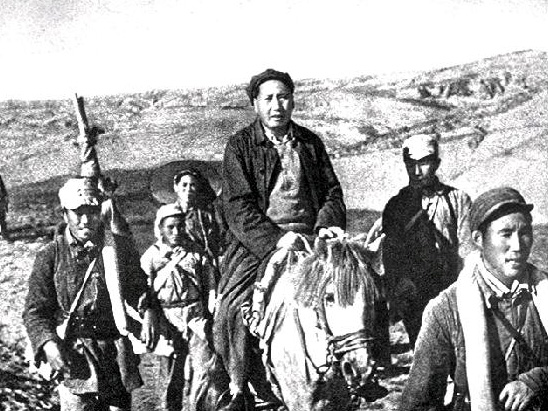

Mao Zedong, pictured here on horseback, adapted Marxist thought to fit China's predominantly rural, agrarian conditions, taking advantage of the desperate poverty of China's many landless peasants in his drive to power. Marx had considered the peasants to be the most backward, reactionary element of society, destined to disappear with industrialization and the rise of the proletariat, or working class. China's first communists in the 1920s followed an orthodox Marxist approach, agitating among China's urban centers and seeking support among its small working class. After Chiang Kai-shek came to power and massacred communists in 1928, setting of the Chinese Civil War, Mao rose to the leadership of the Chinese Communist Party insisting that China's hope for revolution lay in the hands of its poor peasants, the vast majority of the population. Maoism, characterized first and foremost by peasant revolution, would eventually win out in China itself and spread beyond its borders to become a viable force throughout much of the world, Asia, Africa, and Latin America, in the latter half of the 20th Century. Source: Instructional Resources Corporation, The World History CD-Rom (non-European history).